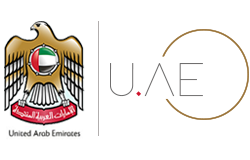Abu Dhabi
Abu Dhabi is the largest emirate. Its population around mid-2016 was 2,908,173. GDP of Abu Dhabi for the year 2022 was AED 840 billion (USD 230 billion).
About Abu Dhabi
Abu Dhabi is the largest emirate in the United Arab Emirates, occupying 84 per cent of the national landmass territory. It has 200 islands and a long coastline stretching 700km. Its total area is 67,340 sq. km.
Abu Dhabi city in the emirate is the federal capital of the UAE.
Population
According to Abu Dhabi Statistics Centre, the estimated population of the emirate around mid-2016 was 2,908,173 (comprising 1,857,618 males and 1,050,555 females). 551,535 were UAE nationals and 2,356,638 were expatriates. The average annual population growth rate for the years from 2010 to 2016 was 5.6 per cent.
Location and geography
The emirate of Abu Dhabi lies on the coast of the Arabian Gulf and is bordered by Sultanate of Oman to the east, the Kingdom of Saudi Arabia to the south and the west and the emirate of Dubai to the northeast. The three main regions of the emirate are:
- the city of Abu Dhabi
- Al Ain in the east
- Al Dhafrah (earlier known as Al Gharbia) in the west.
In the eastern region, to the south of Al Ain city is Jebel Hafeet - the emirate's highest peak (1,240 metres).
Al Dhafrah has seven main cities: Liwa, Madinat Zayed, Ghayathi, Ruwais, Mirfa, Sila and Delma Island.
The city of Abu Dhabi is connected to the mainland by four bridges: Maqta bridge, Mussafah bridge, Sheikh Zayed bridge and Sheikh Khalifa bridge.
Economy
Before 1958, the emirate’s main industry was the export of pearls. Since the discovery of oil, Abu Dhabi is one of the world’s leading producers of energy, with daily production volumes at approximately 3.5 million barrels of crude oil and 10.5 billion cubic feet of natural gas.
The emirate is also a pioneer in the global alternative and renewable energy industry. It is home to the world’s largest solar energy field at Noor Abu Dhabi and the Arab world’s first nuclear energy plant, Barakah Nuclear Energy Plant. It is a major developer of clean energy technology and sustainable urban developments through Abu Dhabi Future Energy Company (Masdar). The emirate plans to rely on renewable energy to generate 50 per cent of its power needs by 2030.
Through its leading international financial centre, Abu Dhabi Global Market (ADGM), the emirate is advancing its position on the global financial map. ADGM is home to ADX, the largest stock exchange in the UAE by market capitalisation, as well as a dedicated crude oil commodity derivatives exchange at ICE Futures Abu Dhabi, which trades ADNOC's flagship Murban Abu Dhabi crude oil futures contracts that help benchmark global crude oil prices, and a thriving ecosystem of fintech startups and SMEs.
Abu Dhabi is also rapidly diversifying its economy by implementing initiatives and policies to create opportunity, stimulate innovation and enhance the contribution of the private sector to the emirate’s GDP.
Source: Government of Abu Dhabi
GDP of Abu Dhabi for the year 2022 was AED 840 billion (USD 230 billion).
Read about Abu Dhabi Economic Vision 2030 (PDF 273 KB).
Touristic importance
Abu Dhabi has become a centre for world-class sporting events such as: the Abu Dhabi Golf Championship, the prestigious Abu Dhabi Desert Challenge cross-country rally and the Formula One Abu Dhabi Grand Prix.
In addition, the city houses the world's largest concentration of premier cultural institutions which includes the Sheikh Zayed National Museum, the Guggenheim Abu Dhabi and Louvre Abu Dhabi.
Abu Dhabi is rich in natural wonders too. While the emirate's famous Liwa oasis in the south of the emirate is home to some of the largest and most beautiful sand dunes in the world, the garden city of Al Ain in the foothills of Jebel Hafeet is home to several heritage sites.
Find out more about tourism and culture in Abu Dhabi:
- Department of Culture and Tourism - Abu Dhabi
- VisitAbuDhabi.ae - the official tourism portal of Abu Dhabi.
Ruling family and governance
Abu Dhabi is ruled by H. H. Sheikh Mohamed bin Zayed Al Nahyan, who is also the President of the UAE since 14 May 2022.
The ruling Al Nahyan family descends from a sub-section of Bani Yas tribe, known as Al Bu Falah. They originally lived in the Liwa oasis and settled in Abu Dhabi in 1793 where they lived in Qasr Al Hosn for almost two centuries.
Abu Dhabi has an Executive Council, under which separate departments function like ministries. It also has several autonomous agencies with clearly specified powers and a 60-member National Consultative Council comprising representatives of the main tribes. Al Ain and Al Dhafrah regions of the emirate and its oil terminal of Das are headed by the rulers' representatives, while its main cities, Abu Dhabi and Al Ain, are administered by municipalities. A municipal authority for the western region has been created.
- List of Abu Dhabi Government's departments - The Abu Dhabi eGovernment Gateway
Useful links:



